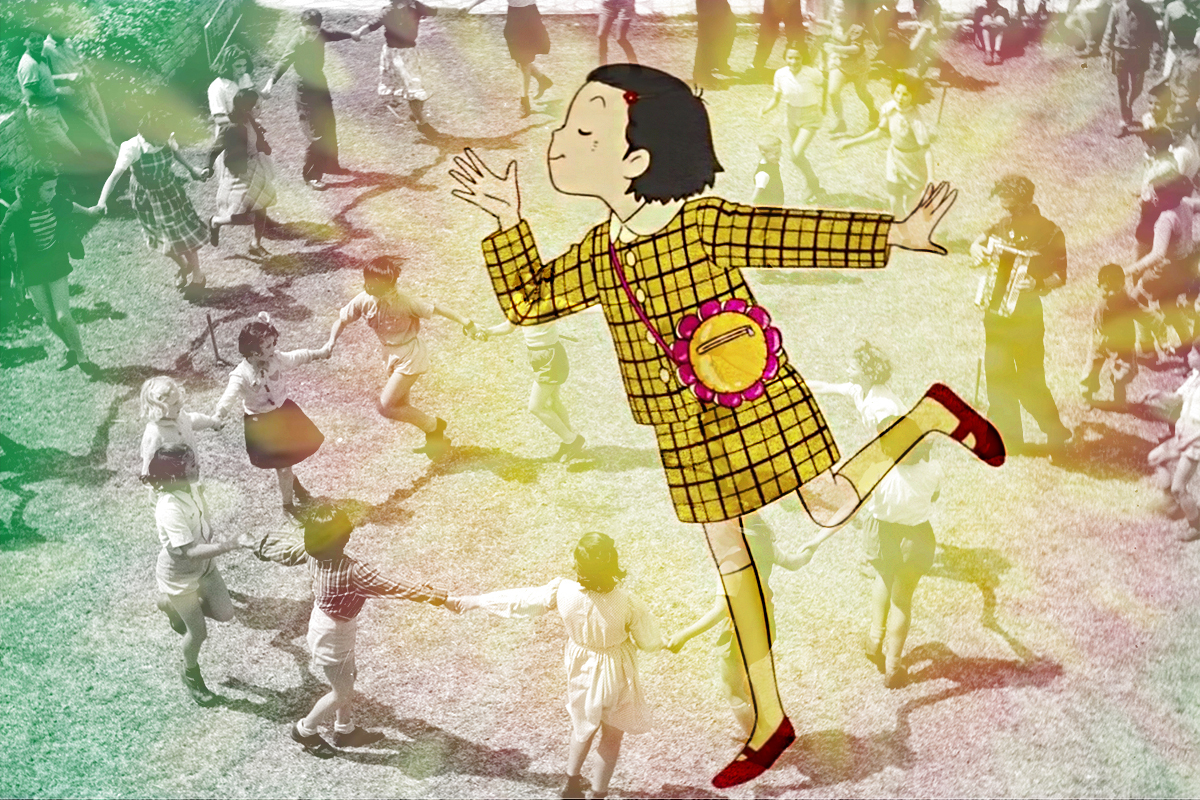Like many people, I’ve spent the past couple of months trying to “improve myself” and be “productive” at home. In particular, I’ve been working on listening to and reading more Japanese. After spending a semester in Kyoto and struggling through my final Japanese class at my home university, it always feels like such a waste to forget everything so quickly.
One of the few good things to happen over the past couple of months was HBO Max’s acquisition of Studio Ghibli’s iconic catalog. Studio Ghibli is often described as the “Disney of Japan.” Co-founded by the legendary animator Hayao Miyazaki, they have won countless prestigious awards, including the 2003 Academy Award for Best Animated Feature for Spirited Away. While I’ve seen Spirited Away and Howl’s Moving Castle a million times (I had them downloaded on my iPod Touch in middle school), it’s been much more difficult to find Studio Ghibli’s less popular movies online until now.
First up on my list was Only Yesterday, an unassuming slice-of-life drama from 1991. In the movie, a young woman named Taeko reflects back on her 5th grade self, pondering over her childish frustrations and the minute drama she faced.
I had admittedly kind of tuned out the audio, since I was more focused on reading the English subtitles. However, about midway through the movie, something brought me back to the audio track. It was a familiar melody, one that I could recognize anywhere: “Mayim Mayim.” Years of Israeli dance at Jewish summer camp and Hebrew school had prepared me for this moment. Yet I had never expected to actually hear this song out of those contexts; what was this Israeli dance song from the 1930s doing in this Japanese movie made six decades later?
I took to the internet and found that “Mayim Mayim” (or マイムマイム) actually has a relatively long history in Japan.
In the years following World War II, Japan was occupied by U.S. forces, led by General Douglas McArthur. During those years, Japan was seriously depressed. The economy was in shambles and people were exhausted from years of war. Officers at the American headquarters thought that folk dancing might be the cure to this widespread malaise. Not only that, but it might even bring democratic values to Japanese society on a smaller scale.
Folk dances tend to involve every dancer holding hands and joining together in a circle as equals. At the time, Japanese society was still largely hierarchal. So, the GHQ (American forces), YMCA, and YWCA started promoting folk dances across the country.
Here’s where “Mayim Mayim” comes in: In the late 1950s, folk dancing pioneer Ricky Holden, who studied dance in Israel, embarked on a world tour to spread folk dance in Asia and Europe. He taught dance in Taiwan (where “Mayim Mayim” is also widely known) and later Japan. Fun fact: “Mayim Mayim” was actually the first international folk dance introduced in Taiwan, and it became synonymous with all international folk dance there.
Back to Japan: Whether people genuinely loved the GHQ-hosted dances, or were just looking for something to do is up for debate. Either way, they were immensely popular. Soon, even Prince Mitaka (Emperor Hirohito’s younger brother) was seen dancing hand-in-hand with commoners. Given their family’s godlike status in the country, this was huge. Over the next few years, folk dance became a common occurrence in labor movements, youth groups, and eventually, schools. By 1955, folk dancing was a mandated requirement for elementary school P.E, and a popular event at field days across the country. To this day, folk dance evokes memories of primary school years for many Japanese people.
Surprisingly, the presence of “Mayim Mayim” in Japanese culture doesn’t end there. Catchy, royalty-free music is the perfect choice for background music and jingles, making “Mayim Mayim” a great option. From the 1980s until today, the song has been used in all sorts of video games, anime, and commercials. It was even used as the background music in — I kid you not — a vaguely erotic 1996 video game called Sexy Parodius. If you ever had a Gameboy Camera, you may have recognized the background music in the ball game, too. These are only two of dozens of uses of this song in Japanese popular media.
2016 saw another “Mayim Mayim” resurgence — as Unseen Japan reports, for a short period of time, it was popular to upload hyper-edited montages of favorite anime characters, set to an equally edited version of “Mayim Mayim.” If you actually search the Japanese spelling of the song on YouTube, these types of videos all have hundreds of thousands of views. This one, parodying the anime Mr. Osomatsu, garnered over 1.3 million views. Whether it’s for nostalgia’s sake or just for fun, “Mayim Mayim” keeps cycling back in the Japanese cultural conscience.
I recently asked a couple of Japanese friends about their familiarity with “Mayim Mayim.” While almost all of them recognized it, nobody knew anything else about it. One guessed the song was used for an agricultural ceremony from the U.K. Another thought she may have heard it before at Tokyo Disneyland. Generally, though, everyone remembered it from their childhoods.
“This song always played at camp at night,” my friend Yoko told me. “People make a big circle holding hands and dance together!”
I never would have expected to have the same exact childhood memories as a friend who grew up over 5,000 miles away, in a culture so seemingly different from my own. It was as if we too were joining at the end of the night to hold hands and dance together.



